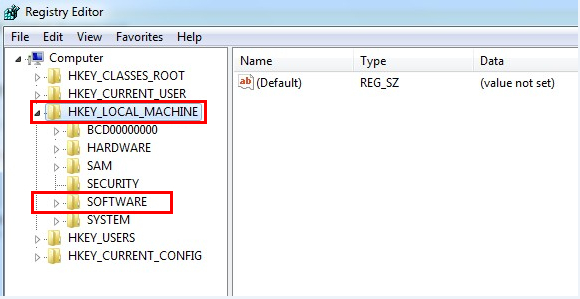5/2/2019
Posted by admin
Remove Files From Computer Registry Average ratng: 5,9/10 4210 reviews
Removing a record from Windows 10 registry is as simple as right-clicking an unwanted Key or DWORD Value, clicking Delete, and clicking Yes to confirm your action.However, what more important and extremely dangerous is to locate the correct record and delete when found respectively. If you delete any important entry from the registry either erroneously or out of ignorance, you PC may start behaving obnoxiously, become unstable, or Windows may get permanently damaged altogether.
Mar 31, 2015. Remove programs from the registry entirely by following this guide. This can often be found in the program folder, such as 'C: Program Files Example.' You will have to restart your computer when finished. Windows stores a lot of critical information in the registry, which is loaded (at least a part of it) during an early stage while booting. If you remove this information, Windows will be unable to find and load critical system files and thus be unable to boot. If you still can not uninstall the program, you may manually remove entries from your Add/Remove programs list by following these steps: Click Start, then click on Run and type regedit in the Open field.
Since Windows Registry is an enormous hive and removing a record from it is a pretty simple process, this tutorial primarily focuses on locating and removing a record of an installed app so that it no longer appears in the Apps & features list in the Settings > Apps window.
Here’s how you can locate and remove a record from Windows 10 registry:
WARNING: Modifying Windows registry incorrectly may cause Windows to become permanently unstable and/or unusable. If you’re unsure or don’t have enough technical knowledge about how Windows and Windows registry work, you are strongly suggested NOT to mess with the registry settings.
DISCLAIMER: Neither Tom’s Hardware, nor any of its direct or indirect associates, author of this tutorial, or any other direct or indirect personnel associated, or by any means related to this tutorial or forum should be held responsible for any damage caused to your computer due to incorrect modifications in the registry. If you wish to follow the procedure given in this tutorial, do so at your own risk.
RECOMMENDATION: Make sure to back up Windows registry before proceeding any further by opening the Registry Editor window, going to File > Export, selecting your preferred backup location, giving the backup file a name, and clicking Save.
- ■Open Registry Editor
Type REGEDIT in the Cortana search box, click REGEDIT from the Best match list (or press Enter), and click Yes in the User Account Control confirmation box. This opens the Registry Editor window. From here you can manage Windows’ registry, and with some smart tweaks, customize your Windows 10 to utilize its features at their full.
■Get to the Uninstall key
Type HKEY_LOCAL_MACHINESOFTWAREMicrosoftWindowsCurrentVersionUninstall in the address bar at the top of the Registry Editor window, and press Enter. This expands the Uninstall key. This hive contains all the installed apps, i.e. both the legacy programs and those from Microsoft Store. The apps are present either by their respective names or IDs, and are listed in the form of keys.
■Remove a record
Right-click the key for the record you want to remove (Mozilla Firefox for this demonstration), click Delete, and click Yes in the Confirm Key Deletion box. This removes the record from Windows 10 registry. Since the records are present by their respective app IDs as well, if you can’t find the app’s name listed under the Uninstall key, you may need to select each record (key) from the left pane, and check its corresponding DisplayName string from the right window to locate the one you’re looking for.



Note: